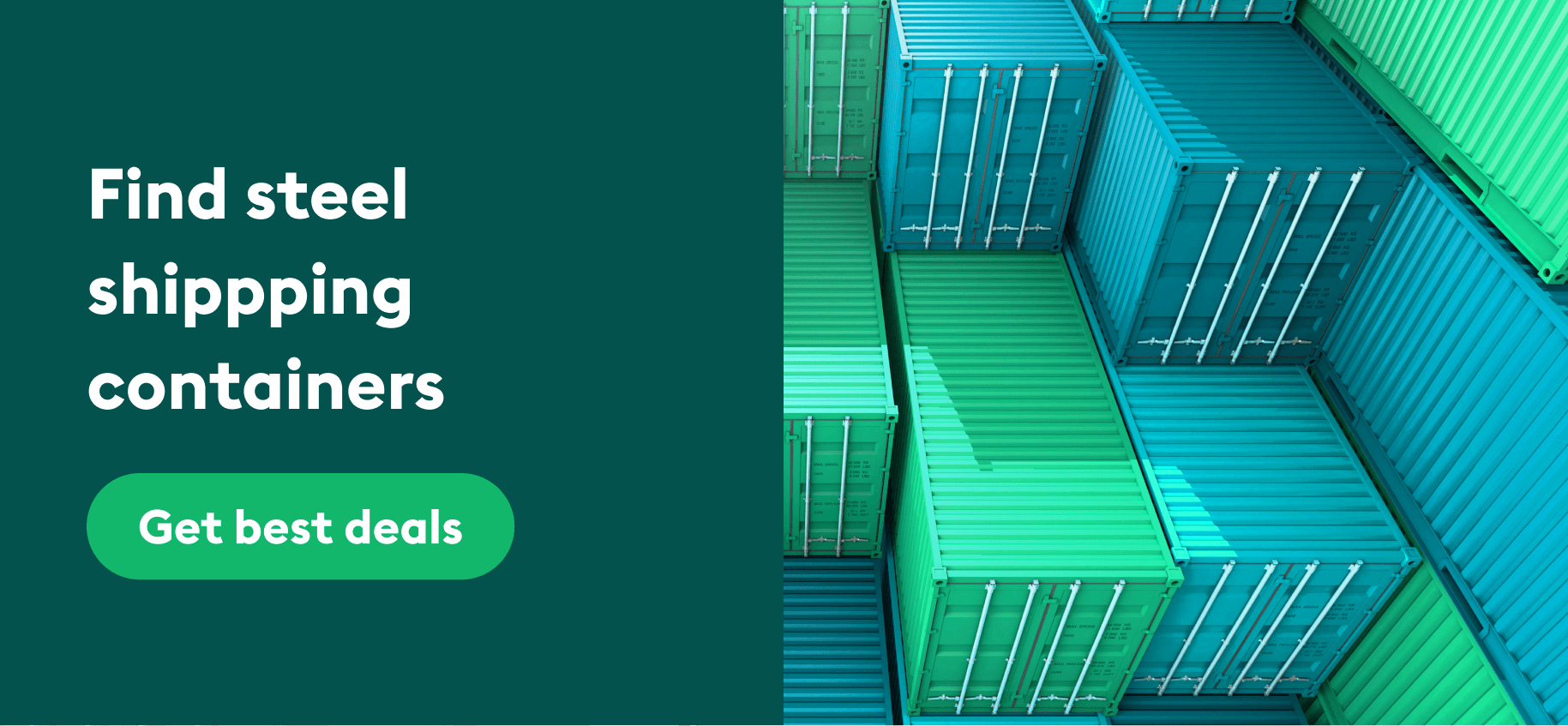Steel shipping containers are a smart choice for shipping and storage due to their durability and security. Learn about benefits, uses, and sizes in this blog.
Steel shipping containers have been used to transport freight for over 50 years. This is due to their longevity, security, mobility, and accessibility. They keep your heavy and fragile cargo safe.
However, finding the steel containers you need on demand, at prices that suit your budget, can be a challenge.
That’s where Container xChange can help you. On our container trading platform, choose from over 100,000 containers in 2,500+ locations globally. You can compare multiple offers from vetted sellers and negotiate directly—no middleman.
Standard steel shipping containers for sale on xChange
20ft standard steel shipping container
The 20ft container is a popular size for shipping goods. You can get new 20ft steel containers for US $2,000 on average.
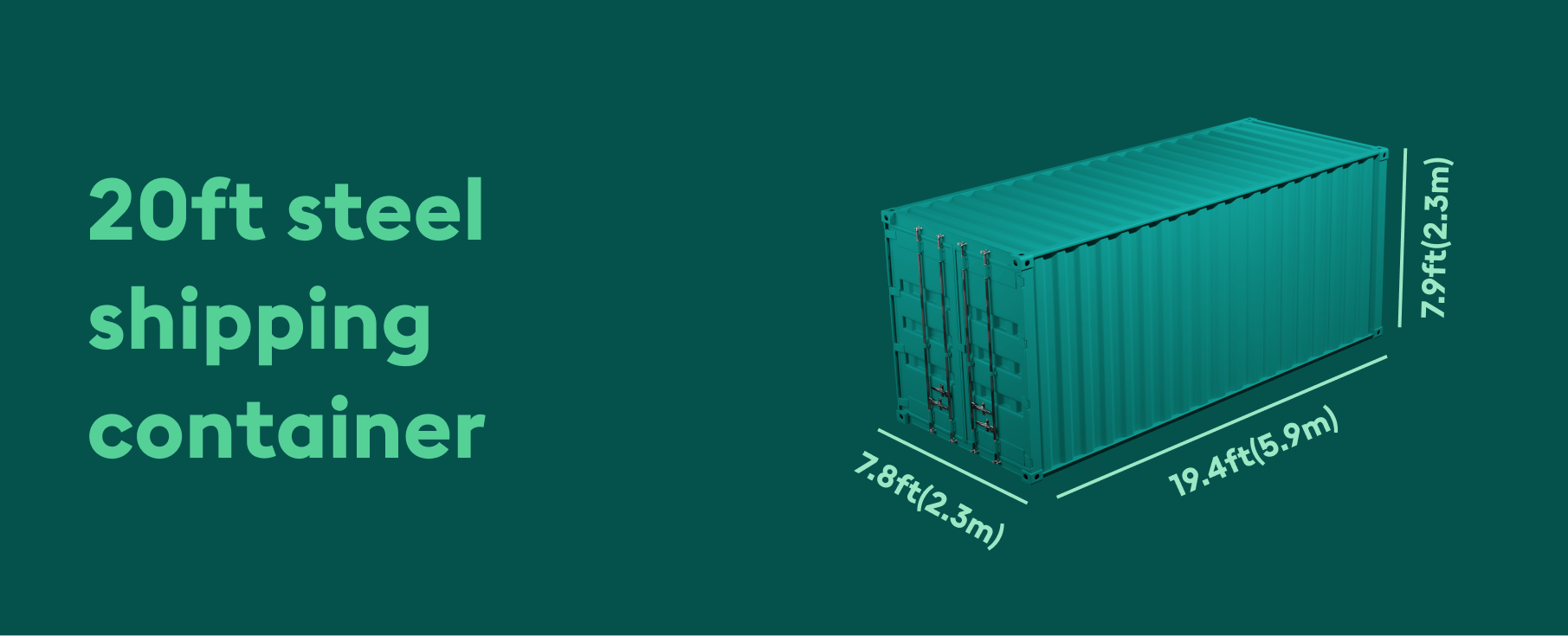
If you’re looking for a cheaper alternative, then cargo-worthy containers are more suitable for you. You can get second-hand 20ft containers for as low as US $900 in some locations on our platform. Click here to check out offers on 20ft containers in your location now.
40ft standard steel shipping container
The 40ft shipping container is ideal for larger shipping loads. It’s also more cost-effective to buy one 40ft container rather than two 20ft containers.
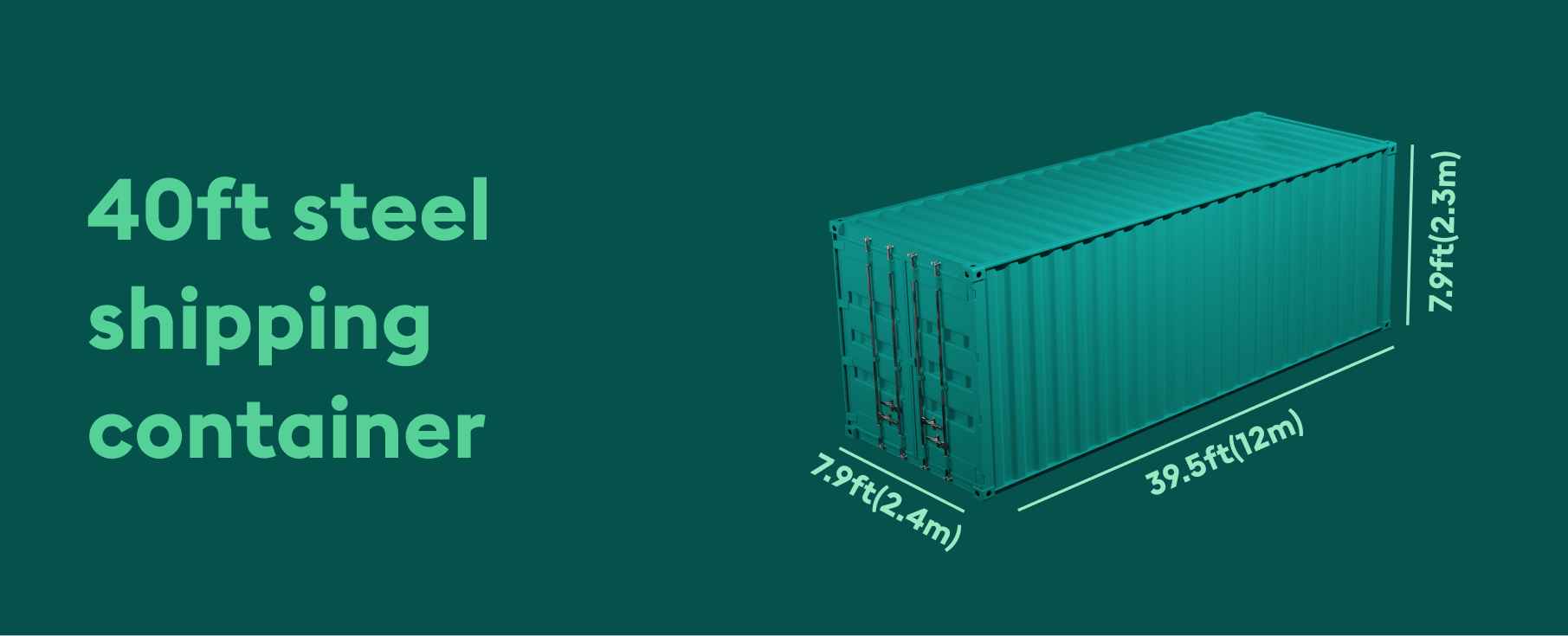
The average price of a cargo-worthy 40ft shipping container is between US $1,500 and US $3,000. Click here to check out 40ft containers for sale in your area today.
40ft HC standard steel shipping container
When compared to standard steel shipping container dimensions, high cubes give you an extra foot in height. These containers are perfect for transporting bulky, voluminous cargo.
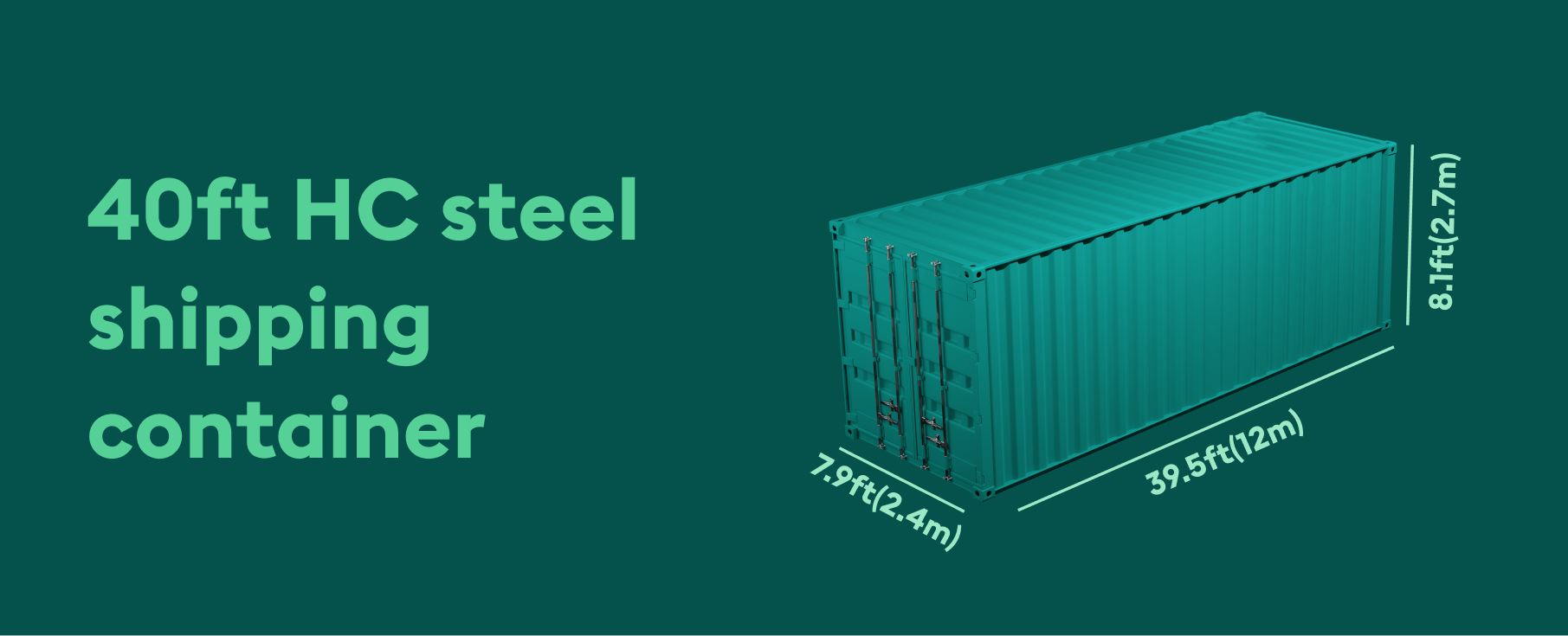
Want to check out the offers for high cube containers in your location? Simply go to our trading platform to browse through sales offers from 1,700+ vetted sellers.
Apart from the standard shipping containers we’ve discussed so far, you can also find specialized containers on our platform. Check out our blog on container types for more information.
New and used steel containers: How to choose
Shipping units come in different container conditions. Before buying units, it’s important to decide on the condition you need.
If you plan to use containers for a long time, you should opt for a new shipping container. New containers last for 15-20 years. However, they’re more expensive than used containers—with the average cost of a new 40ft shipping unit being around US $3,500.
If you’re looking for a more affordable option, then old shipping containers might be right for you. Second-hand containers can last for 8 to 10 years, and they’re perfectly fit to ship your cargo safely. You can buy 40ft old containers for as low as US $1,500 on our platform.
Want to check out the price difference between new and used containers in your location? Click the banner below to chat with our team and learn more.
Benefits of steel shipping containers
Here’s a list of benefits of using steel shipping containers:
- They can withstand resistance and the impact of varying weight loads
- Steel containers can be stacked on top of one another without buckling
- They are built to last for decades with proper care, making them a sustainable and cost-effective option
- Steel containers can be modified to suit various needs by adding doors, windows, insulation, or ventilation for alternative uses
- These containers are fire-resistant, providing added safety for goods stored or transported
What type of steel are shipping containers made of?
Corten steel, commonly known as weathering steel, is the primary material used in making the corrugated wall panels, frames, cargo doors, and cross elements of steel shipping containers. This robust material is lightweight and resistant to corrosion.
Components of steel shipping containers
Steel containers are made up of unique, high-quality components. These components contribute to its long-lasting durability.
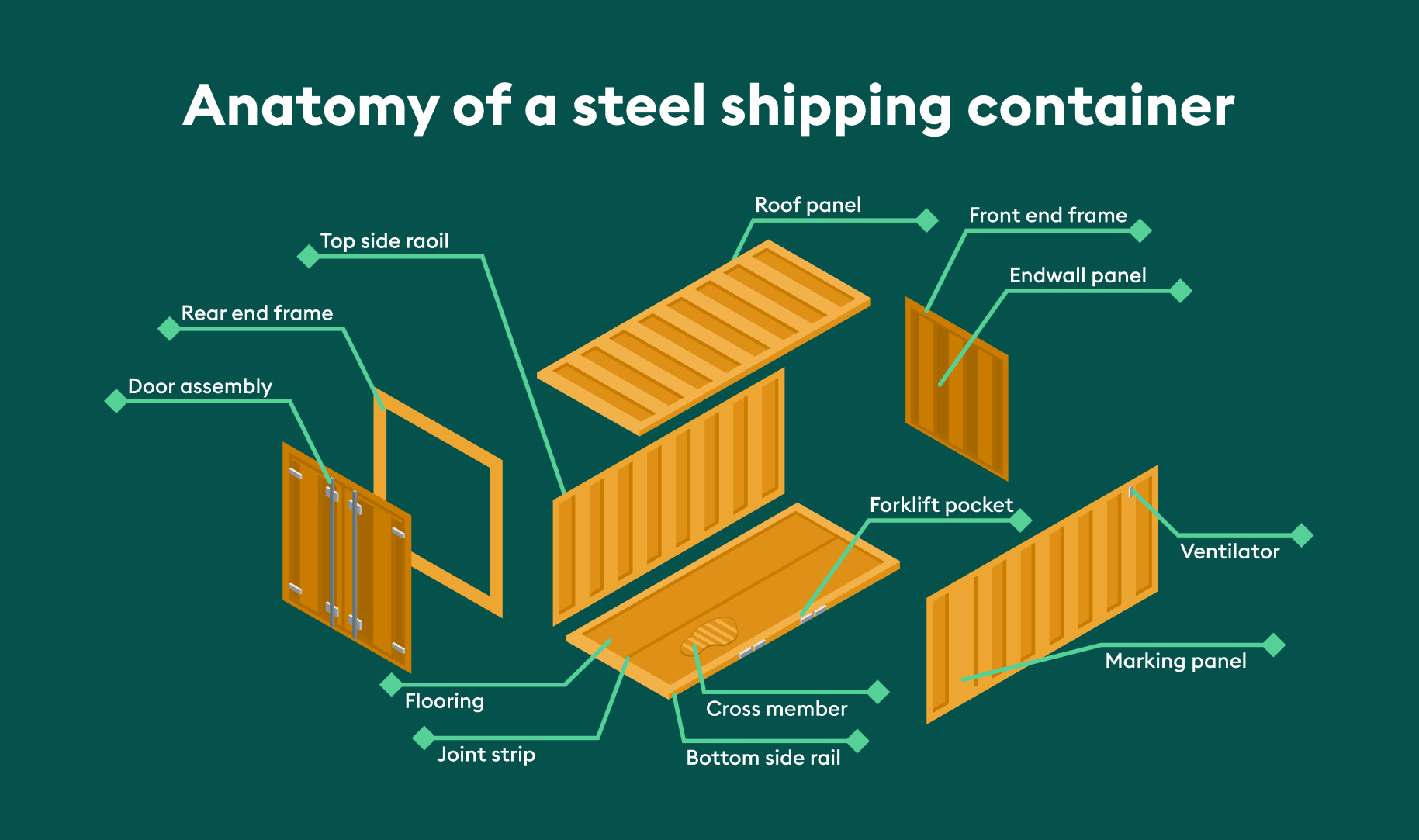
Corner casting and posts
Corner castings are strengthened corners for shipping containers that commonly feature twist-locks. These corner castings and posts are sturdy enough to be attached to cranes, even while carrying a full shipment.
Cross members
Also known as beams, cross members support steel container floors by ‘crossing’ from side to side. Cross members create extra space between the ground and the flooring. This prevents moisture from affecting the floor of the shipping container.
Twist locks
Any steel container designed to be connected to others will have twist locks. These locks can safely fasten shipping containers to other units or anchor points.
Security seals
Many shipping containers have security seals to ensure optimal security. These components are often color-coded and numbered. Plus, you can combine security seals with shipping container locks for extra protection.
CSC plate
A CSC plate certifies that a shipping container complies with certain construction and design requirements. You can find this plate on either the interior or exterior of the steel container.
Buy steel shipping containers at best prices on xChange
Now that you know why steel shipping containers are the best option for your cargo, it’s time to see how you can use the xChange platform to make the best container deals.
With xChange, you can:
- Find steel shipping container offers in 2,500+ locations worldwide
- Connect and network with 1,700+ trustworthy vetted partners in one place
- Safely manage all of your transactions on the platform with the xChange Wallet
- Access 100,000+ containers hassle-free
- Skip the middle-man and avoid added commission
Want to know more about our platform? Simply click on the banner below to get a free demo, and learn how to find steel container deals in your location. Our experts will answer your questions and guide you through the easy steps to getting started. Give it a try now!
Steel shipping containers: Common FAQs
How much is a steel shipping container?
A steel container costs anywhere between US $1,500 and US $3,500. The price is dependent on the size, age, location, and availability of the steel container.
How long do steel shipping containers last?
Steel shipping containers usually last between 25 and 30 years. The lifespan of a shipping container depends on various factors including whether or not it’s maintained and repaired regularly, as well as what types of cargo it ships during its lifetime.
What type of steel are shipping containers made of?
Shipping containers are made using corten steel, commonly known as weathering steel. This is the primary material used in making the corrugated wall panels, frames, cargo doors, and cross elements of steel shipping containers.



